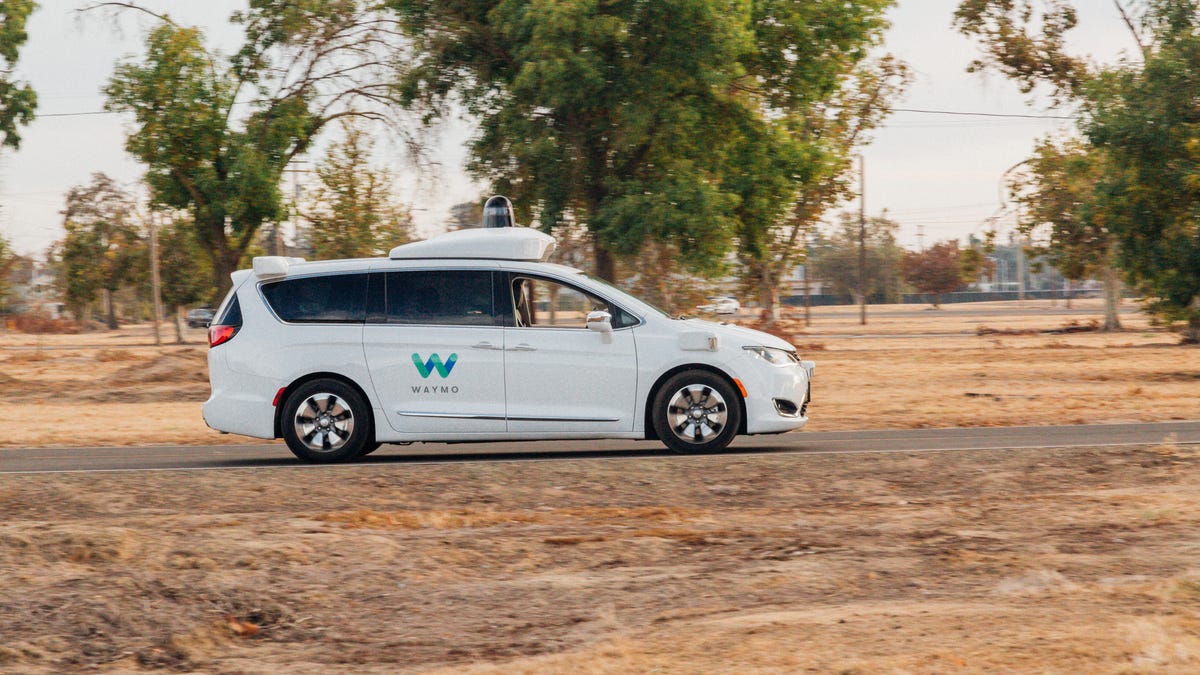Waymo's self-driving cars are far from perfect, report says
A new report from The Information claims the cars are causing frustration and aren't as capable as they appear.

Most stories about Waymo's self-driving efforts in Phoenix have been positive, but a new report claims that the pilot program isn't all flowers and sunshine.
Waymo's self-driving Chrysler Pacifica minivans are struggling to handle certain driving tasks and irking fellow drivers on the road, The Information reports. The outlet talked to a number of sources, some familiar with Waymo's business and some residents in the area where Waymo's vehicles operate.
While many stories about the company's efforts are largely positive, these sources paint a different picture. Other drivers and residents complained that the cars stop for too long at stop signs and have trouble dealing with certain traffic situations, such as taking a left turn across a fast-moving road and merging into rush-hour highway traffic. They also allegedly stop and brake abruptly, confusing other drivers and causing traffic snarls.
"As the only company with a fleet of fully self-driving cars on public roads, our vehicles are continually learning and we've developed robust testing processes that will allow us to safely expand our vehicle's driverless capabilities over time," said a Waymo spokesman in an emailed statement. "Safety remains our highest priority as we test and deploy our technology." The company also told The Information that it has received plenty of feedback from local residents that will help the company continue to develop its autonomous-driving platform.
Progress is being made, but perhaps not as much as locals would like.
Given that Waymo's vehicles are still in development -- its Phoenix program is considered a pilot and not a fully fledged rollout -- the cars are programmed to err on the conservative side. The vehicles will stop for a full 3 seconds at every stop sign, and it prefers wide berths when taking turns in traffic. It doesn't take more than a quick glance at any major four-way stop to see that human drivers cut more than a few corners that AVs don't. The Information's report also points out that Waymo's system has had trouble with drivers who take liberties with the rules of the road.
The trick, it appears, is striking that balance between being a perfect driver and being a driver that blends in. Standing out as a model student clearly doesn't recognize that this is not how a majority of drivers operate. While Waymo attempts to carve its own path to that end, other companies have different solutions. Mobileye, for example, relies on something it calls Responsibility-Sensitive Safety, which accepts that AVs do not exist in a bubble and, thus, must act at least somewhat like current drivers. Roadshow's Tim Stevens took a ride in Mobileye's development car, which went so far as to create a gap in traffic by slowly nudging into a lane until a human driver ceded their position.
Furthermore, Waymo has not been shy about the fact that its system is not, by definition, capable of full-fledged autonomy. Its vans operate by SAE Level 4 autonomy standards, which means that while the vehicle is capable of operating on its own, it can only do so in specific locations and modes. Waymo has not been shy when it comes to discussing the limitations and growing pains of its autonomous vehicles. In fact, a Medium post from 2017 discusses making the kinds of left-hand turns that The Information mentions in its piece. So clearly, some of those teething pains are still being worked through.
The Information brings up another good point, though. Waymo has put some serious effort into mapping every last Planck length of its operational area. If it needed to do that for every corner of the country where it wants its vehicles to operate, this would be a monumental undertaking. While Waymo is quick to talk about expanding its service, there will need to be a more concise way of ensuring a vehicle can operate safely in a given area with less prep time.
Of course, all this is going to take time, and The Information's story does a good job highlighting that a fully functional AV program is still years away. But, again, Waymo's not hiding that fact -- earlier this year, Waymo CEO John Krafcik said that the "time period will be longer than you think" before AVs grow to ubiquity.
Waymo's end goal is to create not just a platform that enables full vehicle autonomy, but an entire car-sharing environment centered on its technology. The company envisions a future where people can use an app to hail a driverless vehicle that will show up and effortlessly shuffle people from Point A to Point B. Part of the company's valuation comes from the perceived profits of this service -- for now, though, the pilot program remains free to its 400-or-so riders.

